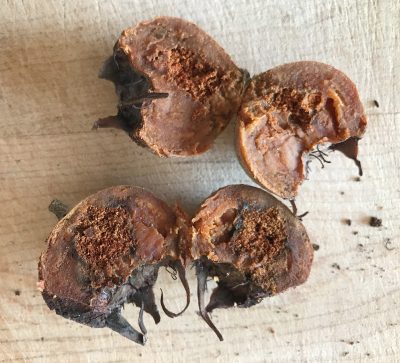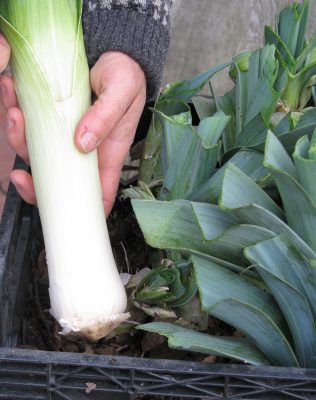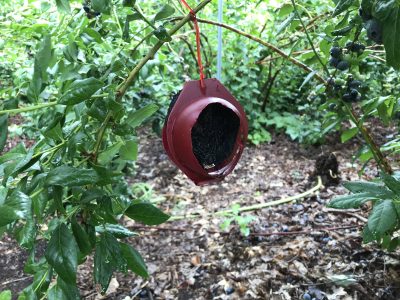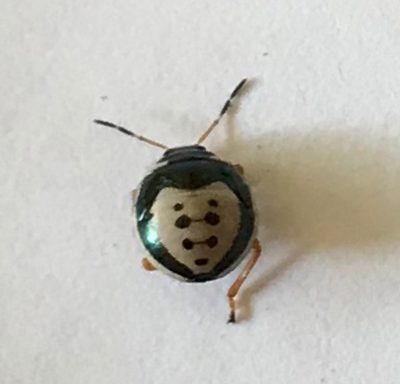LIBERATED, AT LAST
Exposée
My garden was liberated yesterday, the soil freed at last. That’s when I peeled back and folded up the black tarps that had been covering some of the vegetable beds since early April. My beautiful soil finally popped into view.
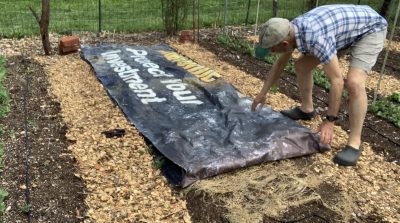
Covering the ground was for the garden’s own good. “Tarping,” as this technique is called, gets the growing season off to a weed-less start. The black cover warms the ground to awaken weed seeds. They sprout, then die as they use up their energy reserves which, without light, can’t be replenished and built up. (I first learned of this technique in J. M. Fortier’s book The Market Gardener.)
Tarping is very different from the much more common way of growing plants in holes in black plastic film, even if one purpose of the soil covering, in both cases, is to snuff out weeds. Black plastic film is left in place all season long, and then disposed of, usually in a landfill, at season’s end.
Tarping tarps might be silage cover material or — as in my case — recycled, vinyl billboard signs (black on one side). They are left in place for relatively short duration, after which time the ground can be exposed to natural rainfall and air, and is open for blanketing with compost and cover crops. After each use, tarps can be folded up and stored for re-use for many seasons more.
Prescription for Weed-lessness
Tarping is but one part of my multi-pronged approach to weed control, the others of which I detail in my book Weedless Gardening.
My garden is also weed-less because I never, and I do mean never, till the soil, whether with a rototiller, garden fork, or shovel. Preserving the natural horizonation of the soil keeps weed seeds, which are coaxed awake by exposure to light, buried within the ground and dormant. No-till also has side benefits: preserving soil organic matter, maintaining soil capillarity for more efficient water use, and not disrupting soil fungi and other creatures.
Tilling does loosen the soil structure, but I avoid soil compaction by planting everything in 3-foot-wide beds, saving the paths between the beds for foot traffic.
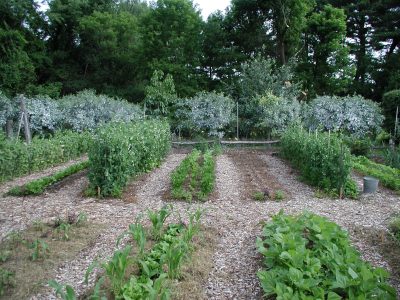
Weed-lessness is also the result of each year covering the ground with a thin layer of a more or less weed-free mulch, just half inch to an inch thick depth. This covering snuffs out small weed seeds that might be present. Other benefits are insulating to modulate wide swings in soil temperature and softening the impact of raindrops so that water percolates into the ground rather than running off.
What I use for this thin layer of mulch depends on what’s available, what I’m mulching, and, sometimes, appearance. Vegetables are hungry plants so their beds get an inch depth of ripe compost, which, besides the other benefits of mulches, also provides all the nutrition the vegetable plants need for a whole season. Paths get wood chips; it’s free, it’s pretty, and it visually sets off paths from beds. Straw, autumn leaves, sawdust, and wood shavings are some other materials that would work as well.
At the end of the season, beds that have been harvested but aren’t needed for autumn cropping, get a cover crop, which is a plant grown specifically for soil improvement.
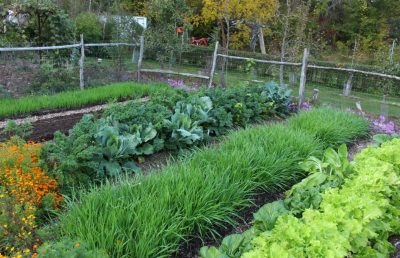
Cover crops provide all the benefits of mulches, plus looking pretty, sucking up nutrients that might otherwise wash through the soil in winter, and growing miles and miles of roots to give the soil a nice, crumbly structure. I plant oats or barley, because the plants thrive in cool autumn weather and then, here in Zone 5, are killed by winter cold sometime in January. The leaves flop down, dead, to become mulch, which I rake or roll up easily before it’s time for spring planting.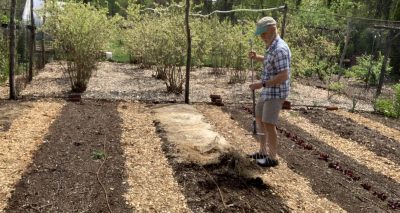
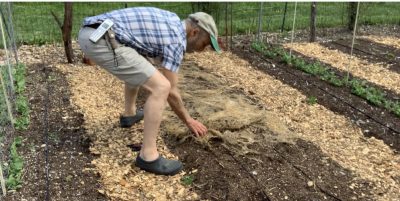
Another ploy for weed-lessness is using drip irrigation. Sure, I could get by without any watering here in the “humid Northeast,” but timely watering gets the most out of the garden. Drip irrigation pinpoints watering to garden plants rather weeds, which would, with a sprinkler, be coaxed to grow, for instance, in paths.
Weed-less but Not Weed-free
With this multi-pronged approach to weed-lessness, isn’t tarping like “taking coals to Newcastle?” No. I found that even after not tilling, mulching, using drip irrigation, and, especially, cover cropping, some weeds do a figurative “end run”and find their way into some beds. Especially, the last few years, red dead-nettle (Lamium purpureum).  Yes, I know the plant is pretty, provides early nectar for pollinators, and is edible. But its out of place in my vegetable beds. The tarp does it in.
Yes, I know the plant is pretty, provides early nectar for pollinators, and is edible. But its out of place in my vegetable beds. The tarp does it in.
No garden can be weedless. But mine has been weed-less for many, many years.

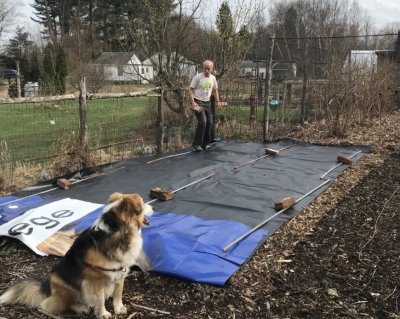 Actually, that insidious blackness covering my beds is black vinyl. But that’s beside the point. Its purpose, like the black plastic against which I’ve railed, is to kill weeds. Not that my garden has many weeds. But this time of year, in some beds, a few more sprout than I’d like to see.
Actually, that insidious blackness covering my beds is black vinyl. But that’s beside the point. Its purpose, like the black plastic against which I’ve railed, is to kill weeds. Not that my garden has many weeds. But this time of year, in some beds, a few more sprout than I’d like to see.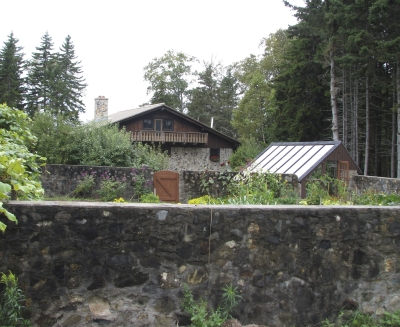 I had just dug my first garden which had a clay soil that turned rock hard as it dried, so I was especially awed, inspired, and admittedly jealous of the soft, crumbly ground in Scott’s garden. What a surprise when someone who had worked with Scott for a long period told me how tough and lean his soil had been when he started the garden. A number of giant compost piles were testimonial to what it takes to improve a soil.
I had just dug my first garden which had a clay soil that turned rock hard as it dried, so I was especially awed, inspired, and admittedly jealous of the soft, crumbly ground in Scott’s garden. What a surprise when someone who had worked with Scott for a long period told me how tough and lean his soil had been when he started the garden. A number of giant compost piles were testimonial to what it takes to improve a soil.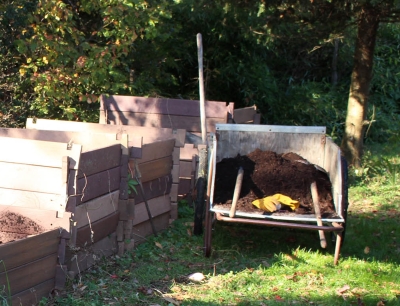 The soil in my permanent vegetable beds is never turned over with a rototiller or garden fork; instead, every year a layer of compost an inch or so deep is lathered atop each bed, and no one ever sets foot in a bed. That inch of compost snuffs out small weeds, protects the soil surface from washing away, and provides food myriad beneficial microbes (and, in turn, for the vegetable plants).
The soil in my permanent vegetable beds is never turned over with a rototiller or garden fork; instead, every year a layer of compost an inch or so deep is lathered atop each bed, and no one ever sets foot in a bed. That inch of compost snuffs out small weeds, protects the soil surface from washing away, and provides food myriad beneficial microbes (and, in turn, for the vegetable plants). Recent additions to that pile were an old soil pile from a local horse farm and soil from a hole I was digging to create a small duck pond. The latter was poorly aerated subsoil.
Recent additions to that pile were an old soil pile from a local horse farm and soil from a hole I was digging to create a small duck pond. The latter was poorly aerated subsoil.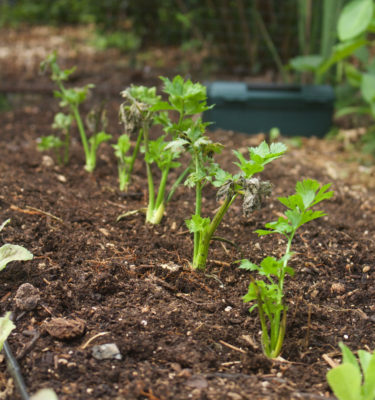
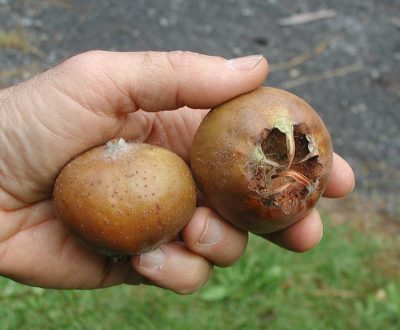 Usually the plant is pest-free but a few years ago something, perhaps a fungus, perhaps an insect, started attacking it, leaving the flesh dry and crumbly. I have yet to identify the culprit so that appropriate action can be taken.
Usually the plant is pest-free but a few years ago something, perhaps a fungus, perhaps an insect, started attacking it, leaving the flesh dry and crumbly. I have yet to identify the culprit so that appropriate action can be taken.